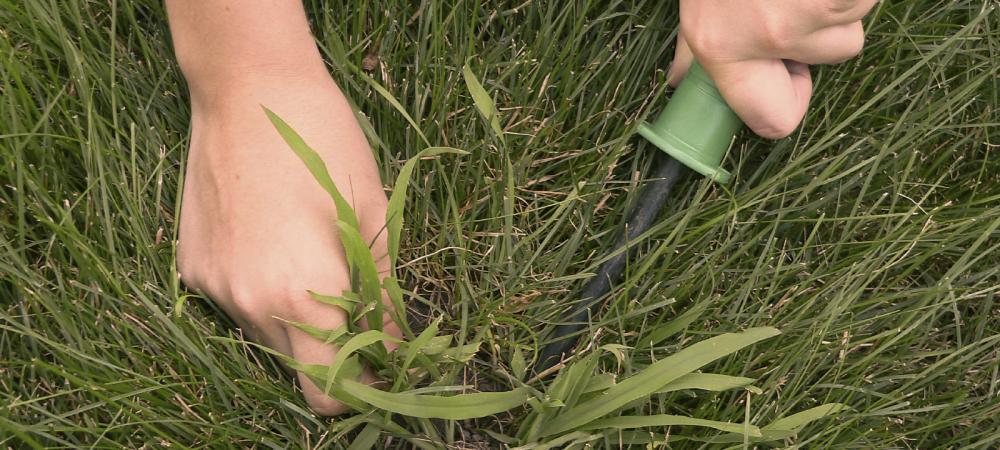Common Grassy Weeds in Kansas: Identification and Control

Kansas lawns and gardens can face a variety of grassy weeds that disrupt the beauty and health of outdoor spaces. Effective weed control starts with proper identification. In this blog, we’ll cover common grassy weeds found in Kansas and provide tips for weed removal using both pre-emergent and post-emergent herbicides.
Understanding Grassy Weeds in Kansas
Grassy weeds are unwanted plants that can quickly spread and overtake your lawn or garden. They often compete with your desired turf for nutrients, water, and sunlight, leading to a less healthy and attractive outdoor space. Here’s a look at some of the most common grassy weeds in Kansas.
Common Grassy Weeds in Kansas
Crabgrass (Digitaria spp.)
Description: Crabgrass is a warm-season annual weed that thrives in sunny, disturbed areas. It forms low, spreading mats that can quickly crowd out desirable grasses.
Control: Use a pre-emergent herbicide in early spring to prevent crabgrass seeds from germinating. For existing crabgrass, a post-emergent herbicide specifically targeting crabgrass is effective.
Quackgrass (Elymus repens)
Description: Quackgrass is a perennial weed with a robust root system, making it difficult to remove. It often appears in lawns and garden beds, forming dense clumps.
Control: Effective weed removal of quackgrass involves using a post-emergent herbicide. Regular mowing and proper lawn care can also help manage its spread.
Barnyardgrass (Echinochloa crus-galli)
Description: Barnyardgrass is a summer annual weed that thrives in moist, fertile areas. It can quickly form dense patches.
Control: Apply a pre-emergent herbicide before barnyardgrass seeds germinate. For established weeds, a post-emergent herbicide is necessary.
Foxtail (Setaria spp.)
Description: Foxtail includes several species such as yellow foxtail and green foxtail. These annual weeds are aggressive and can form dense mats in disturbed soils.
Control: Pre-emergent herbicides are effective for preventing foxtail germination. Post-emergent herbicides can help control existing foxtail populations.
Goosegrass (Eleusine indica)
Description: Goosegrass is a warm-season annual that thrives in compacted soils and high-traffic areas. It forms dense, mat-like growths.
Control: Use a pre-emergent herbicide to prevent goosegrass from establishing. Post-emergent herbicides targeting goosegrass are useful for existing infestations.
Dallasgrass (Paspalum dilatatum)
Description: Dallasgrass is a perennial grass that forms clumps and can invade lawns and turfgrass areas. It is challenging to remove due to its extensive root system.
Control: Post-emergent herbicides can help manage Dallasgrass. Regular lawn maintenance and proper fertilization can also aid in reducing its presence.
Nutsedge (Cyperus spp.)
Description: Although technically not a true grass, Nutsedge often appears alongside grassy weeds. It is a perennial weed that thrives in moist soils and can be quite invasive.
Control: Use specific herbicides designed for Nutsedge, as they target this weed while minimizing damage to desirable grasses.
Witchgrass (Panicum capillare)
Description: Witchgrass is a summer annual grass that spreads rapidly in disturbed soils. It is often found in gardens and lawns.
Control: Apply a pre-emergent herbicide to prevent Witchgrass from germinating. For existing Witchgrass, use a post-emergent herbicide.
Japanese Millet (Echinochloa crus-galli)
Description: Japanese Millet is a summer annual grass that can become invasive in moist areas. It grows quickly and forms dense stands.
Control: A pre-emergent herbicide can help prevent Japanese Millet seeds from sprouting. For mature plants, a targeted post-emergent herbicide is recommended.
Common Bluegrass (Poa annua)
Description: Common Bluegrass is an annual weed that can appear in cool, shady areas. It is often seen during the winter and early spring.
Control: Apply pre-emergent herbicides in the fall to prevent Common Bluegrass from germinating. Post-emergent herbicides can be used to manage existing infestations.
Effective Weed Control Strategies
To manage grassy weeds effectively, follow these strategies:
- Pre-Emergent Herbicides: Apply these herbicides before weeds germinate to prevent new infestations. Timing is crucial for optimal results.
- Post-Emergent Herbicides: Use these to target existing weeds. Choose herbicides specific to the type of weed for best results.
- Regular Maintenance: Regular mowing, proper fertilization, and maintaining a healthy lawn can help prevent weed problems and reduce the need for herbicides.
Contact Wetlands Irrigation and Turf for Professional Weed Control
Grassy weeds can pose a significant challenge to maintaining a healthy lawn in Kansas, but with proper identification and control methods, you can keep your outdoor spaces looking their best. Whether you use pre-emergent or post-emergent herbicides, understanding the types of weeds in your area and how to manage them effectively is key to successful weed control. For best results, consider consulting with a lawn care professional at Wetlands for personalized advice and treatment options.
For more information on effective weed control and herbicide options, contact us today!
